Middle Finger To the Sky: The Worst Ronin by Maggie Tokuda-Hall and Faith Schaffer
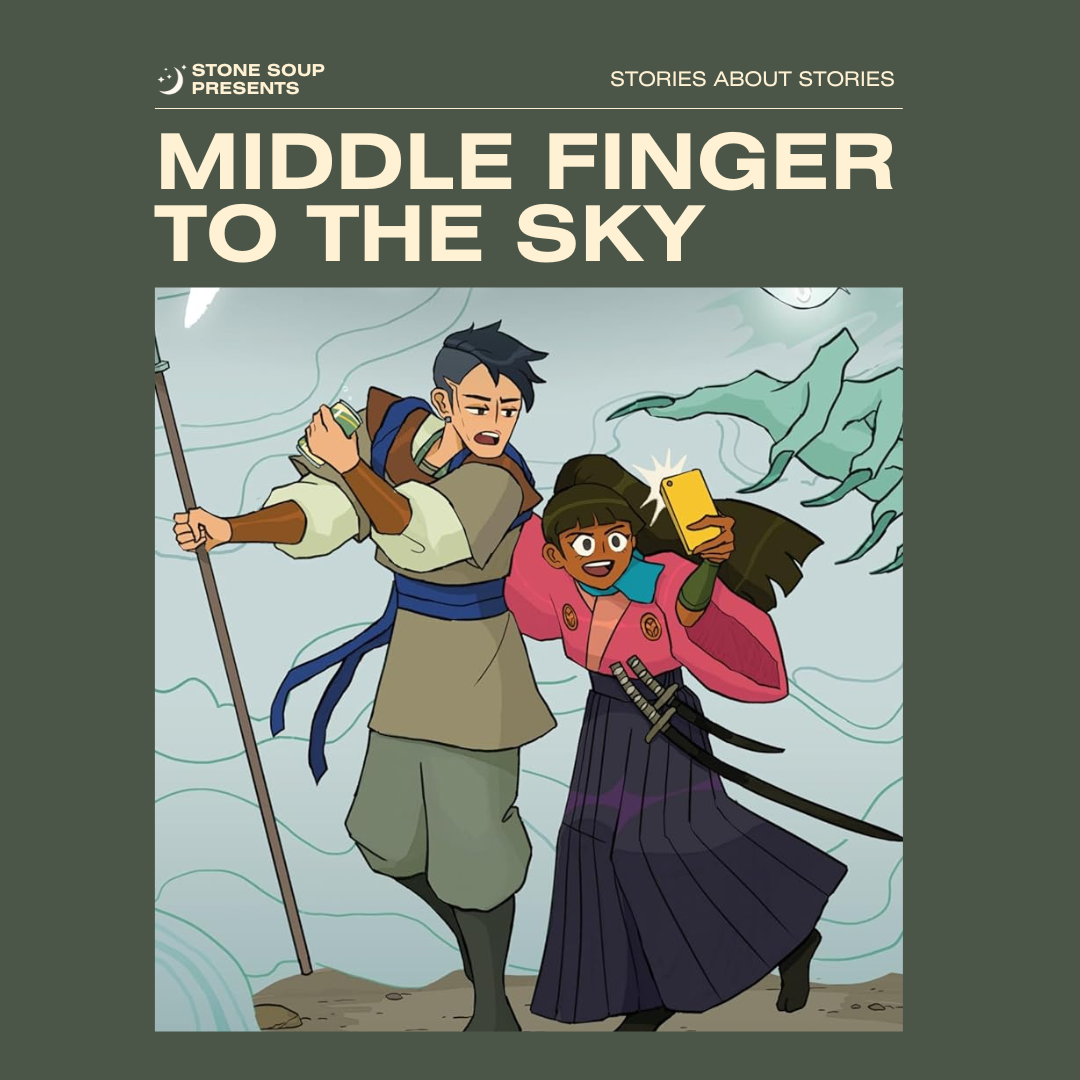
Together, author Maggie Tokuda-Hall and artist Faith Schaffer have just released The Worst Ronin, a graphic novel about samurai, violence, ambition, and loss. It’s already one of my favorite books of the year, so of course, I was absolutely thrilled at the opportunity to talk to the team behind the book about how it was made, from conception to writing to an editorial changeover. This interview features an especially deep dive into the interior design process for a graphic novel. Thank you so much to team Ronin for sharing their insights! Let’s jump in.
Being a samurai isn't easy. Sixteen-year-old Chihiro Ito knows that more than anyone. Her father is renowned among the samurai, but the only thing Chihiro is known for is spending way too much time on her phone obsessing over Tatsuo Nakano, Chihiro's idol and the first woman to be accepted into Kesi Academy, a prestigious samurai school.
So, when Chihiro's father is conscripted for service and the opportunity arises to work with Tatsuo in his stead, Chihiro jumps at the chance to prove that she's worthy of a spot at Kesi Academy and the samurai title. Their mission: kill the yamauba demon terrorizing a village. With a legendary samurai like Tatsuo by her side, Chihiro is convinced victory is inevitable. But Tatsuo isn't at all like the hero Chihiro imagined. Foulmouthed, quick tempered, and a terrible drunk, Tatsuo completely turned her back on the samurai way and is now a ronin working for hire as a means of escaping the grief that haunts her. Forced to work together, the two are thrust on a treacherous journey filled with epic battles and twisted conspiracies as they must put aside their differences to save the village and face the demons of the past.
Ed. note: This interview has been edited for clarity and flow.
Gailey: Maggie Tokuda-Hall, what do you do?
Maggie Tokuda-Hall, author of The Worst Ronin: I make stories out of nothing. I think it's neat that I've made a career out of that, and am very grateful for it because I'm pretty bad at everything else. The Worst Ronin is the first book where I sat down and was like, fuck it. I can do whatever I want, this is make believe.
Gailey: That sounds incredibly freeing.
Tokuda-Hall: It was! I knew this book would have a hard time in a marketplace that wants something very different from creators like me, and I worried it wouldn't sell at all. But, I told myself if it DID, then that meant that from now on I would write whatever I wanted without concern for authorial brand or market awareness or any business concern. So in a very real way, this book has set me free as an artist, and I am very grateful to Lily Kessinger, the editor who acquired it, for that.
Lily Kessinger, Editor: I acquired The Worst Ronin script (so just the text of the graphic novel) in early 2020 and worked on a couple rounds of edits with Maggie over the following year.
Tokuda-Hall: This is a project a lot of editors passed on BECAUSE of the elements that meant the most to me–the flagrant historical inaccuracy, the anachronisms. And so I am very grateful to Lily Kessinger not only for immediately getting that this is an invitation to play, but also for playing with me.
Gailey: Lily, what was it like to read this one for the first time?
Kessinger: I remember when this project landed in my inbox because I had a feeling it was going to be special. The premise was so fun and outrageous, I moved it to the top of my queue and accidentally stayed up all night to finish it.
Gailey: Maggie also ended up working with another editor when Lily Kessinger stepped away–Elizabeth Agyemang came on board.
Tokuda-Hall: Having a new editor on the project was a first for me, and so naturally I was very nervous about it. But Elizabeth stepped in so gracefully, midstream, which cannot be easy.
Agyemang: At the time, I was on the same editorial team with Lily when she brought the project to our team meeting. I remember thinking how awesome it seemed.
Gailey: What was it like to take this project on?
Agyemang: I loved the vision Lily had for it, and it was great hearing how wonderful she found working with the creative team that is Maggie Tokuda-Hall and Faith Schaffer, the illustrator, along with Kyla Aiko, the letterer for the book, and our amazing in-house designer Celeste Knudsen. I knew the book was going to be special and by the time I joined the team to work directly on it as the editor inheriting the project, it was already in amazing shape.
Gailey: What drew you both into the book?
Kessinger: It was pretty much love at first read. I was impressed by the scope of the project–particularly the ambitiousness of the anachronistic setting. The story was firing on all cylinders for me in terms of plot, characterization, action, and emotion. It was propulsive, smart, and almost unfairly funny.
Agyemang: Something I distinctly remember from when Lily first shared the project with the team was the humor. Beneath the story's raw and heart-wrenching narrative arc, there's so much humor that still crackles off the page. Humor is such a hard thing to nail and can be very iterative, so it was great seeing how Maggie managed to still capture the initial hilarity of the pitch while weaving in that sharpness that in the final version of the story.
Kessinger: Maggie is a force of a writer and I knew immediately that I'd be lucky to work with her on this one (I wasn't wrong).
Tokuda-Hall: It was a joy to edit this book with [Lily], and she intimately understood the vision immediately. She's no longer working in kids' books, which is a shame, because she has a sharp eye for craft elements that are not commonly deployed but that absolutely deserve space to thrive. By the time Elizabeth came on board, I was largely done editing the written elements, but she was still able to insert a lot of expertise into the back end of this project.
Gailey: What did you get to do here that you might not have gotten to do if this book landed elsewhere?
Tokuda-Hall: [The Worst Ronin] was largely written with a middle finger to the sky–when POC are invited to the table to tell our stories, there are usually so many caveats. Yes, we want your story but we want it to be about your marginalization. Or, yes, tell your story, but we want it to be edifying about your culture. There's this demand that we serve the white gaze, and not a respect for our boundless imaginations. We want to make up shit, too. And so I very stridently let the reader know, in many ways, that this book is not there to educate them about anything. This is not historically accurate. This is a work of invention.
Gailey: How did you first dive into the story, knowing you could do whatever you want?
Tokuda-Hall: I took such joy in writing this book. I had a misguided notion at first that I would keep it super wholesome and middle grade, but my brain just doesn't work that way, and as soon as I accepted that the plot and characters took off and I just felt like I was sprinting to catch up with them. The hardest thing with this book was balancing the humor that is so inherent to the central characters (The Worst Ronin is a buddy comedy, in its heart) with the darkness of the stories they each would face.
Gailey: That sounds like a major evolution in tone.
Tokuda-Hall: I changed the tenor of the violence pretty dramatically over the course of drafting. At first it was all akin to like, a super hero cartoon. Whack! Blammo! But Tatsuo's character basically rejected that, and refused to fit in the story when I tried to bend it that way. She's someone who's witnessed and perpetrated incredible violence, and she holds that with her everywhere she goes. I couldn't make her not be that and still be herself.
Gailey: What did Tatsuo tell you about herself?
Tokuda-Hall: I'd had Tatsuo's character in mind for a long time. I knew her so well. But when her backstory revealed itself to me, the whole project came together. I think of all my characters, across all my work, she's the one I know the best. Tatsuo has lost her best friend and feels she is personally responsible for it. She carries the loss of him like a boulder that's been strapped to her back, and she is frankly unable to manage that lift.
Gailey: Tatsuo provides such a stark contrast to young Chihiro.
Tokuda-Hall: Chihiro loses her parents, with whom she had a wonderful and healthy and happy relationship. There is real loss in this book, and there is so much grief. And I don't know how many buddy comedies about grief you have written, but it was my first.
Gailey: The two definitely don’t have an easy time together, at least at first.
Tokuda-Hall: There's a line that repeats "FOR JUSTICE!" that Chihiro cries out because she's cringe, and I really enjoy the face Tatsuo makes every time she does it. Just so annoyed, so disgusted. She's seen so much but she's still a teenager, and Chihiro's earnestness gives her the full teenage ick.

Gailey: The art in this one really brings the story to life. What was it like working with artist Faith Schaffer?
Tokuda-Hall: She brought so much humor to the page, and allowed the campiness of some of the story to really shine.
Gailey: Faith, how does it feel to look back on this project?
Faith Schaffer, illustrator: I'm really happy with the flow page-to-page and the expressions for the characters! It was fun to show their full range of emotions, from goofy to serious and everything in between. I also hadn't done much action drawing before so the fight scenes really pushed me out of my comfort zone, but I'm happy they did because I think they turned out nicely!
Gailey: Let’s talk about how Faith came on board for the project. How does the perfect artist get connected to a script?
Agyemang: For graphic novels, sometimes the idea starts with an individual script and the publisher finds an illustrator whose vision and style aligns with the writer’s story. Other times, projects come in from author-illustrators or an author and illustrator team. For The Worst Ronin’s, the former was the case.
Gailey: I understand that Design Manager Celeste Knudsen was integral to this process. Celeste, can you explain a bit about your role?
Celeste Knudsen, Design Manager: I art direct and design graphic novels, picture books, and novels. For graphic novels, I'll often start working on the project shortly after the editor acquires the title or receives a first draft of the manuscript. I work closely with our editorial, managing editorial, and production teams to ensure beautifully printed books make their way to readers' hands.
Gailey: At what point in the process did you join the team?
Knudsen: I first heard about the project when the original art director, Mary Claire Cruz, shared a sequential sample and character designs from Faith Schaffer at an in-house meeting. I was immediately enamored with Faith's linework and unique watercolor style of coloring, as well as the pitch for the graphic novel's plot. I was so excited about it, that when Mary Claire left for another opportunity in late 2020, I asked if I could inherit the project.
Gailey: How do you usually begin your collaboration on a project like this one?
Knudsen: In the case of graphic novel manuscripts where only a writer is attached to the project initially, I might read the original pitch summary and sample of the manuscript and search for artists who I think could be a good fit for the tone of the book. The editor and author may also have some ideas of potential artists they like. If an artist has a strong portfolio but doesn’t have many examples of sequential art or characters in a particular style, the editor and designer may commission a sample asking for a specific scene and/or line-up of the cast of characters from the project.
Agyemang: Maggie had the script, and as the editorial process took shape and the search for an artist to collaborate with went underway, Faith Schaffer came on board for the project. Since I came around the last stage of the publication process, the biggest challenge was probably getting up to speed with everything. But since I was already a fan of the project from when Lily acquired it, it was really rewarding getting to work closely with Maggie, Faith, and our in-house teams to shepherd the book to the finish line.
Gailey: What made you feel certain that Schaffer was the right fit for The Worst Ronin?
Kessinger: I [looked] for artists who could bring the project alive visually and capture the text's physical and emotional landscapes. Collaborating closely with the design team, I created a few artist mood boards to send to Maggie for feedback. We both loved Faith Schaffer's work–her art has so much range and nuance, not to mention beautiful weaponry! I contacted Faith to see if she'd be interested in creating the art for the graphic novel.
Knudsen: The editor or I will also ask the artist about their specific process: how many stages they usually incorporate between the sketches and final art and if they have an idea of the timeline they can work at for these stages. Once an artist is signed up for a project, I will discuss technical details with them, such as parameters for file size, set-up, and delivery. I’ll also confirm the schedule with them for interior and cover sketch and final art delivery.
Gailey: It sounds like Schaffer was able to step up on all fronts.
Tokuda-Hall: This is Faith Schaffer's very first book, and you cannot tell that from looking at the work she turned out for this project.
Schaffer: I was nervous about my debut graphic novel- it seemed like such an overwhelmingly big project and like I needed to be an expert to start it.
Kessinger: Once she came aboard and the script was finalized and copyedited, designer Celeste Knudsen and I worked with Faith as she progressed through rounds of character design, thumbnails, sketches, and inks (while also looping Maggie as things developed).
Gailey: How do sketches and development fit into the design process?
Knudsen: The artist usually sends a first round of interior sketches for the full book that the editor and I review. We might ask for revisions before sharing with the larger team depending on the project. Once the sketches have been shared with the author, and the team agrees that the pacing feels solid, I request a consistency check from the managing editor who will carefully comb the art for any inconsistencies in character positioning, attire, interior architectural details, etc. The editor and I collaborate to pass along the collected notes to the artist, who will then get started on the next stage (sometimes this is inks, and sometimes flat or final color depending on how tight the artist’s process is and how tight their initial sketches were).
Schaffer: In my initial art test for the book I had the characters in more complicated outfits–I recall I gave Tatsuo a slight pattern on her clothes. While this looked nice on an individual character sheet it would have been both more noisy as a visual read and time-consuming to draw, so I'm glad that I dropped it in the final pass.
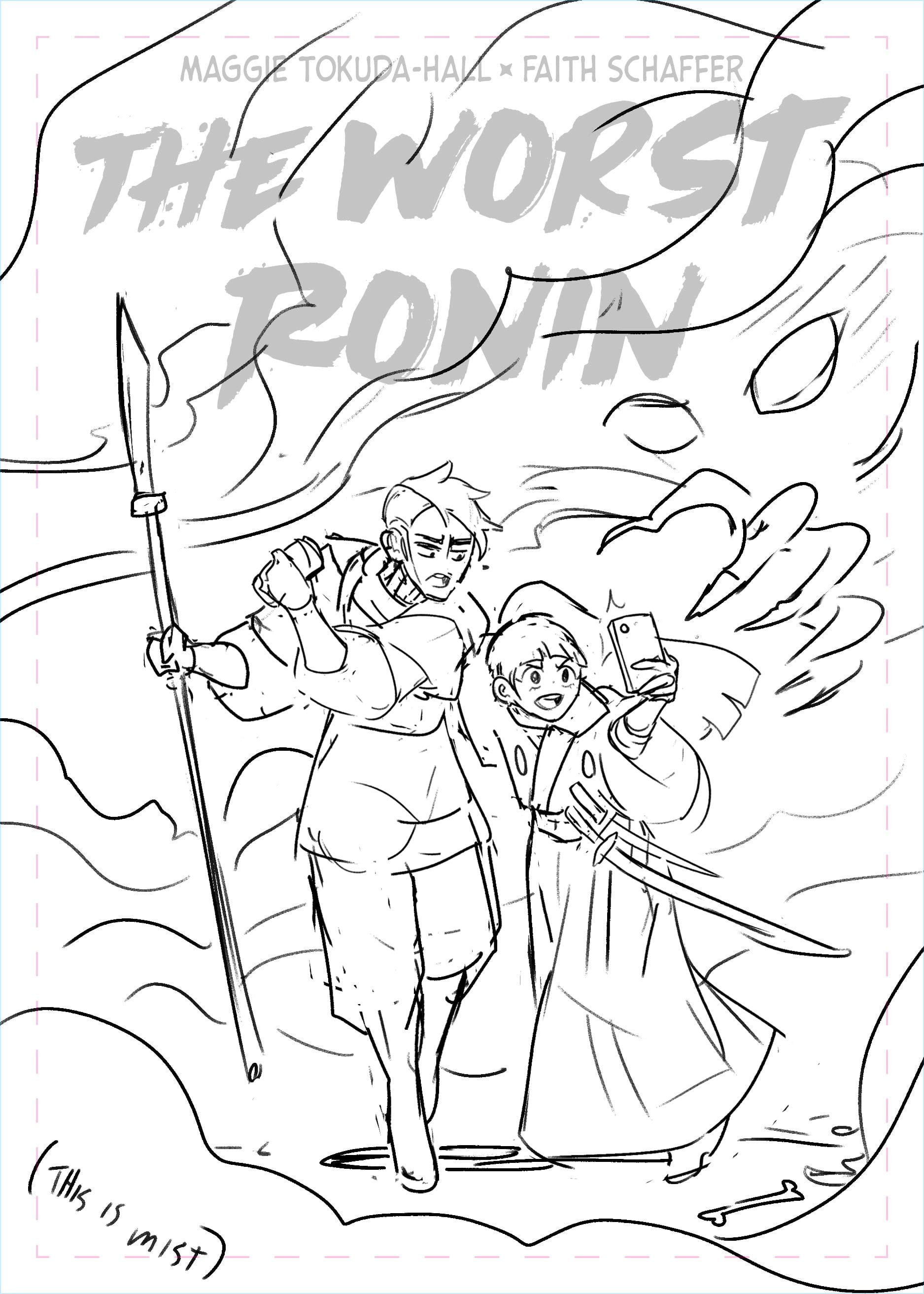
Gailey: What process ended up working best for you?
Schaffer: I started the project by thumbnailing the whole book physically across 2 notebooks. Doing this let me flip through the pages like I would with the finished book and see where I was repeating compositions too much, how the pacing felt and where I needed to add pages for breathing room with the narrative.
Gailey: After thumbnails, there’s still a huge amount of work to do for you.
Schaffer: I handled all the visuals from pencil to color, with the exception of the lettering. I'm not the fastest when it comes to color so I had to figure out a process to make it go smoothly. Once I had a routine figured out it went a bit faster!
Gailey: How did the art evolve over time?
Knudsen: After seeing the first interior sketches, we felt there were a few scenes, especially in parts of the story with a lot of action, that could be expanded. We asked Faith to add more breathing room to these scenes and detail more of the movements of the characters. I’m really happy those pages were added and can’t imagine the book now without them!
Agyemang: In the art, Faith brought a vibrant and expressiveness to the characters and world that just grabs you and hooks you into the visual narrative of the story. The same way great comedians add a physical humor to their comedy, as a duo Maggie's script and Faith's art really embodied this, and the story is so clever, sharp, funny, and visually stunning.
Tokuda-Hall: There's a page where Chihiro is being held at knife point, and the LOOK ON HER FACE is SO funny that I screenshotted it and open it to make myself giggle now and again. [Faith] added in such a slapsticky logic to the action and I adore what she's done.
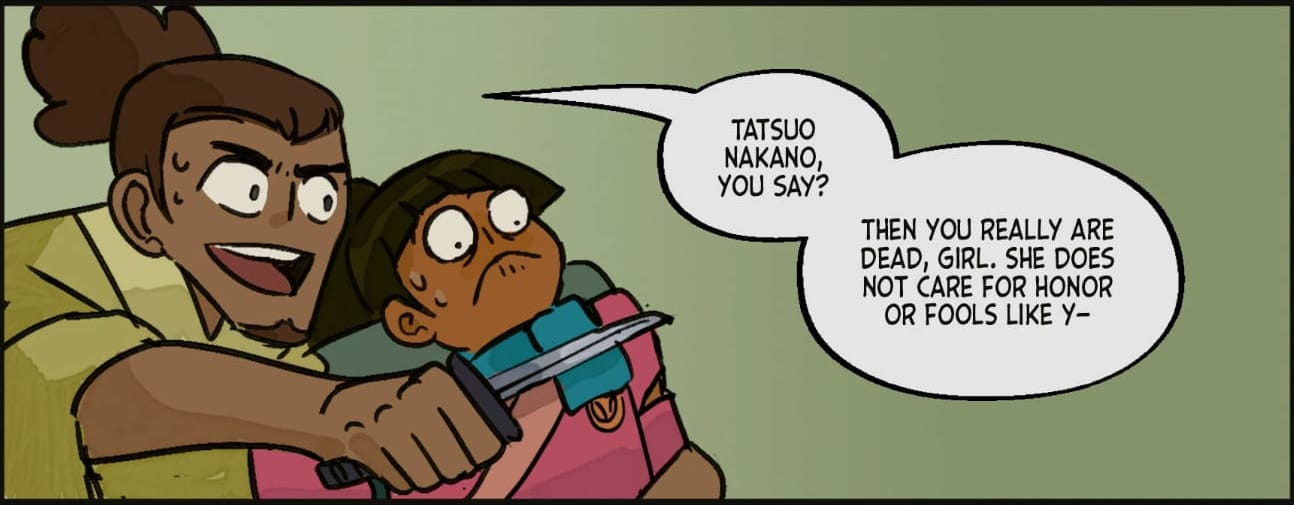
Agyemang: I loved seeing the book come to life. The unique thing about graphic novels is that when there's a writer and artist team, you really get to see the magic of collaboration happen right before your eyes. Maggie created such a distinct world and voice for Chihiro and Tatsuo. Seeing that come to life in Faith's vibrant and stunning art, and collaborating with them and the letter for the book, Kayla, and design, managing editorial, production, sales, marketing, publicity, and school and library teams to bring this book to readers was so rewarding.
Gailey: What else goes into the design of a graphic novel like this one?
Knudsen: Depending on the project and the needs of the artist, the designer might also hire a letterer, who will run out the manuscript text and draw balloons and necessary additional elements, such as narrative boxes or sound effects. For The Worst Ronin specifically, we brought on the wonderful Kyla Aiko, who set the dialogue text and drew the speech balloons, while Faith Schaffer hand-lettered the sound effects as part of the art.
Gailey: What is the process like from there?
Knudsen: The in-house team and author review intermediary stages as necessary up until the final color interior art is submitted, passes a consistency check, and is approved by the full team. After the art is approved, I ask Production for a few scatter test proofs of the interior pages to check how the color looks and if any shifts or edits need to be made.
Gailey: Let’s talk cover design.
Knudsen: After the interior is complete, the team will brainstorm a few cover ideas and the artist submits a few cover sketches. After collecting feedback from the team, I’ll go back to the artist for additional revisions or new ideas. Once the team approves a cover composition, and if there’s time, I’ll ask the artist to either extend the front cover art to wrap onto the back cover, or will ask for spot art to place on the back cover.
Gailey: What were you looking for in the cover for The Worst Ronin?
Knudsen: One challenge was finding a composition for the front cover that captured the action and adventure of the plot, the unique sense of humor of the story, the dynamic relationship between the two lead characters, and featured some of the conflict and danger they face. We also wanted to give a hint of the anachronistic details in The Worst Ronin that wouldn’t be expected in a typical samurai story. Faith’s first cover sketch captured Tatsuo’s cool demeanor and Chihiro’s exuberance and had a great sense of movement! It showed both characters with their weapons bared, striking active poses with a demon character from the middle of the book lurking in the background.
Gailey: What changed between the first cover sketch and the final cover?
Knudsen: The in-house team and author loved many elements of this first sketch but hoped to layer in some more humor and unique aspects of the story. Faith honed the vision for the cover by zooming out on the scene and giving Chihiro and Tatsuo some anachronistic props that give some insight into their different personalities. She also tucked the demon character into the mist with just its hand hovering out, seen by the reader, but not Chihiro and Tatsuo who are distracted by one another. There was a lot we wanted to capture on the cover, and we were so excited with the final cover Faith sent in!
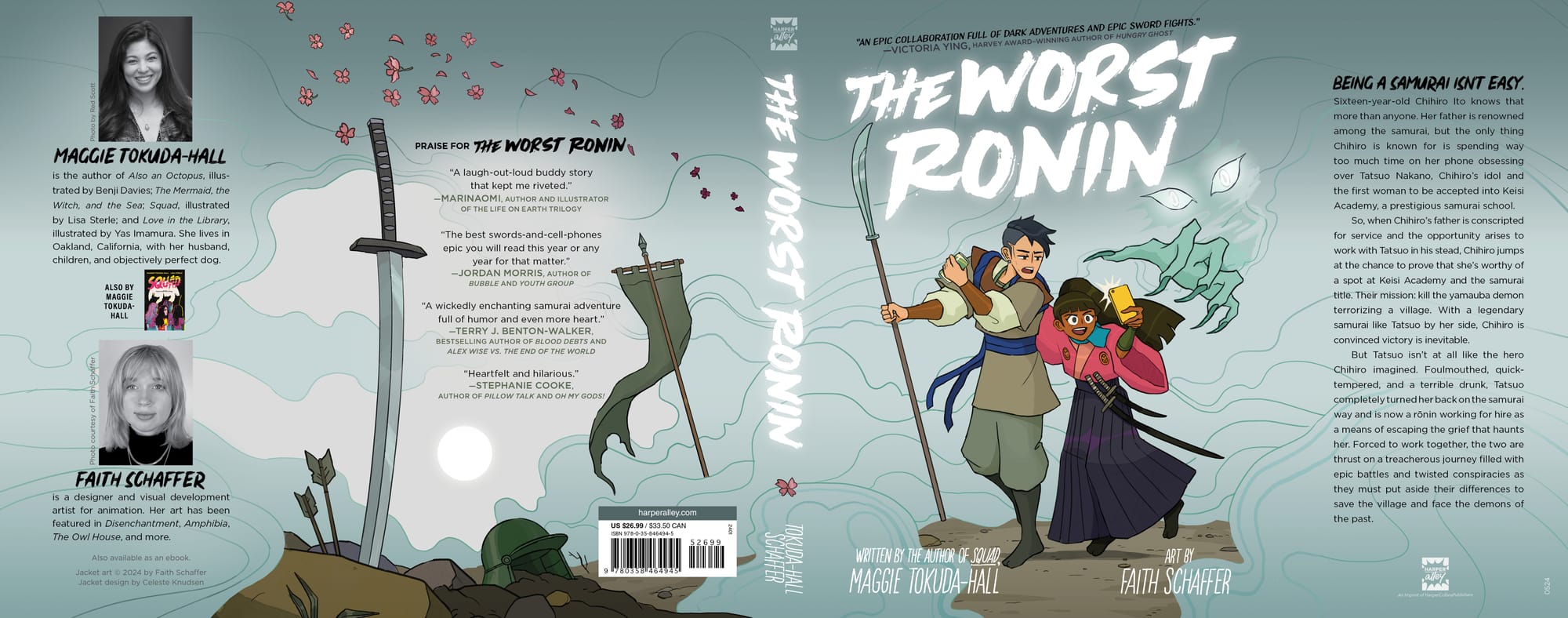
Gailey: There are a lot of details that go on the cover in addition to the art. Do you handle those?
Knudsen: I usually add title type and author/artist bylines to the cover sketches to share with our in-house team and the author. At some point, I receive copyedited jacket text from the managing editor and will design it with the jacket art, adding the barcode and any blurbs that come in.
Gailey: Are there any details of the final package you especially love?
Knudsen: I love the wrap art Faith created for the jacket that has the clouds of mist swirling onto the back cover and a trail of cherry blossoms blowing over the battlefield. There’s something haunting about what the mists conceal and reveal. I also love the endpapers of the hardcover edition which continue the lines of mist from the jacket.
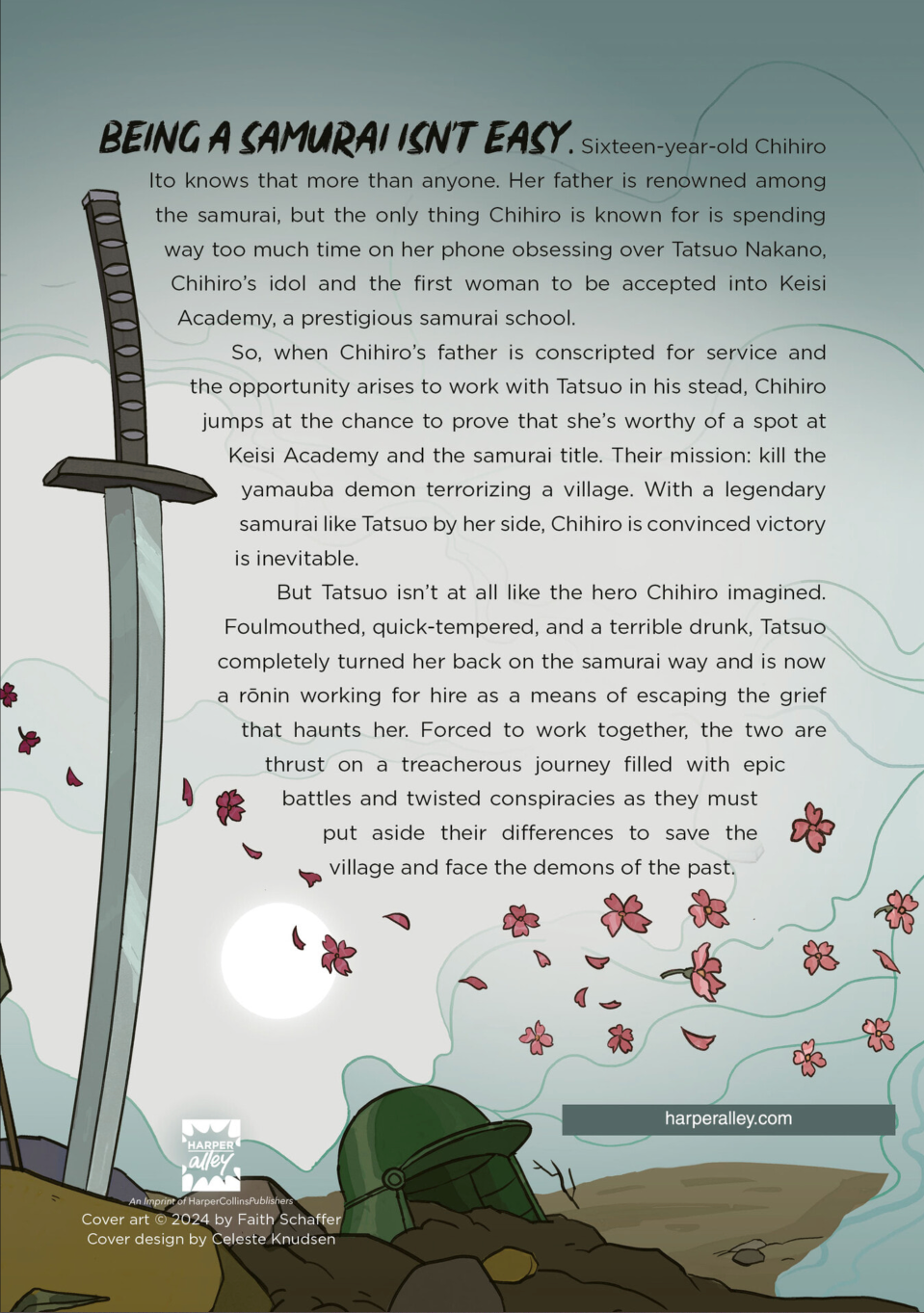
Tokuda-Hall: It’s so hard to talk about a story like this, because it’s so goofy and so serious, so campy and so grounded in reality. And somehow Faith and Celeste were able to reflect that in the cover. It wasn’t a light lift.
Agyemang: I'm just thrilled that The Worst Ronin is now out in the world for readers to fall in love with too.

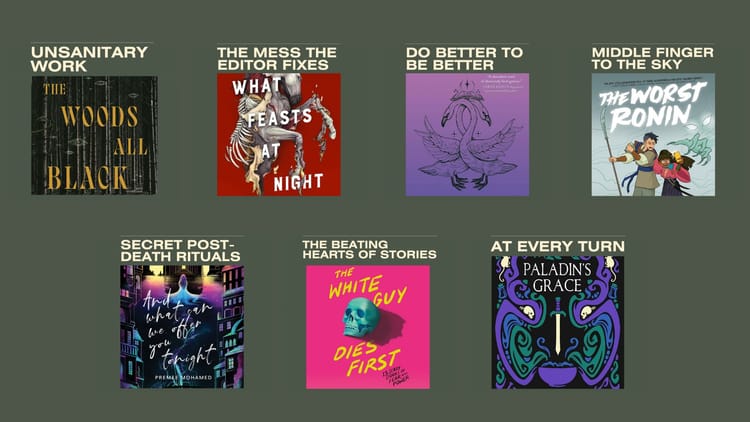




Member discussion